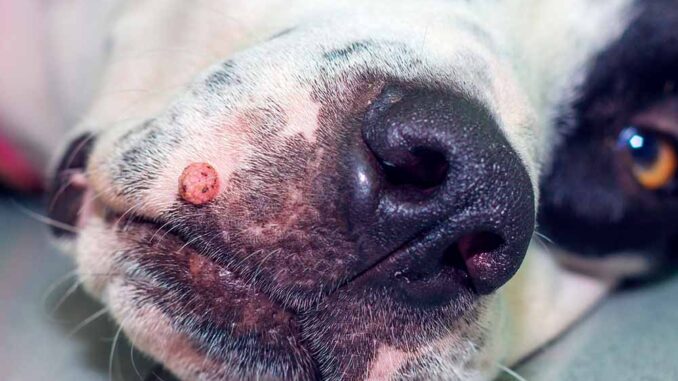
This article was updated on October 3rd, 2023
Dog warts (Papillomas) are single or clusters of tiny lumps, which can disappear after a few months. They come in many different shapes and forms as shown in the pictures below, provided by our dermatology consultant Dr. Ian Spiegel and veterinarian director Dr. Jamie Whittenburg.
Pictures of warts on dogs
Warts can show up as a single small lump, or as a group or cluster of tiny lumps which look a little bit like a cauliflower floret:
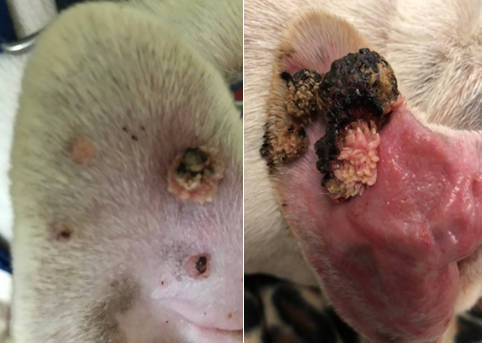
© Dr. Ian Brett Spiegel VMD, MHS, DACVD
Older dogs tend to develop single warts, whereas puppies are more prone to multiple wart groupings. However, either type of papillomas/warts can develop on a dog of any age.
Warts on dogs can appear in various colors, including pink, black, brown, or the same color as the surrounding skin.
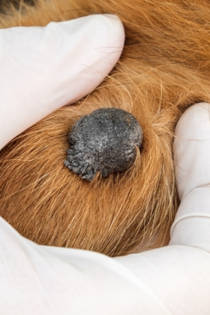
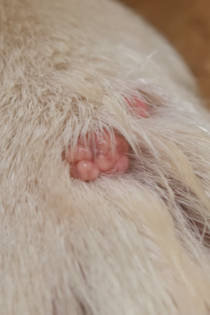
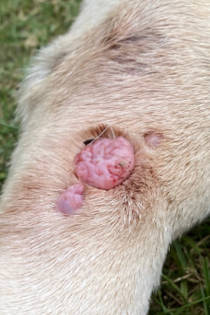
On the picture below, a veterinarian shows a wart on a dog’s neck:
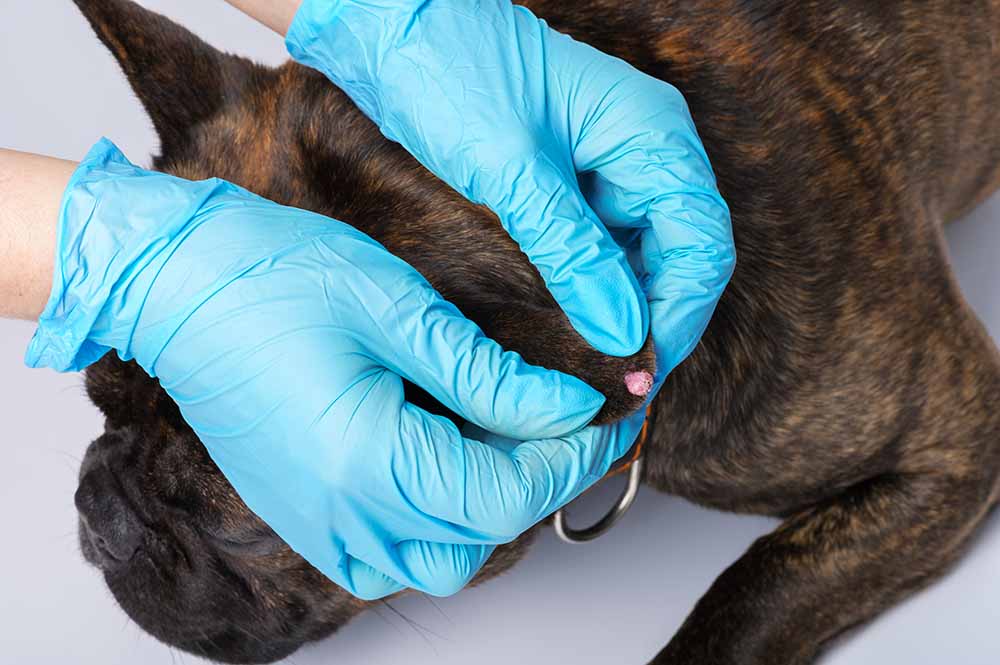
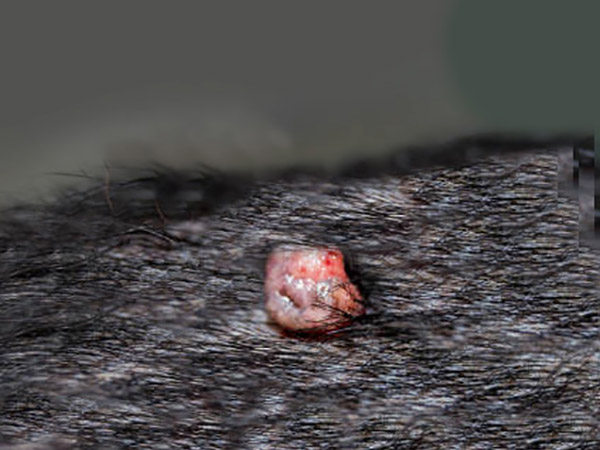
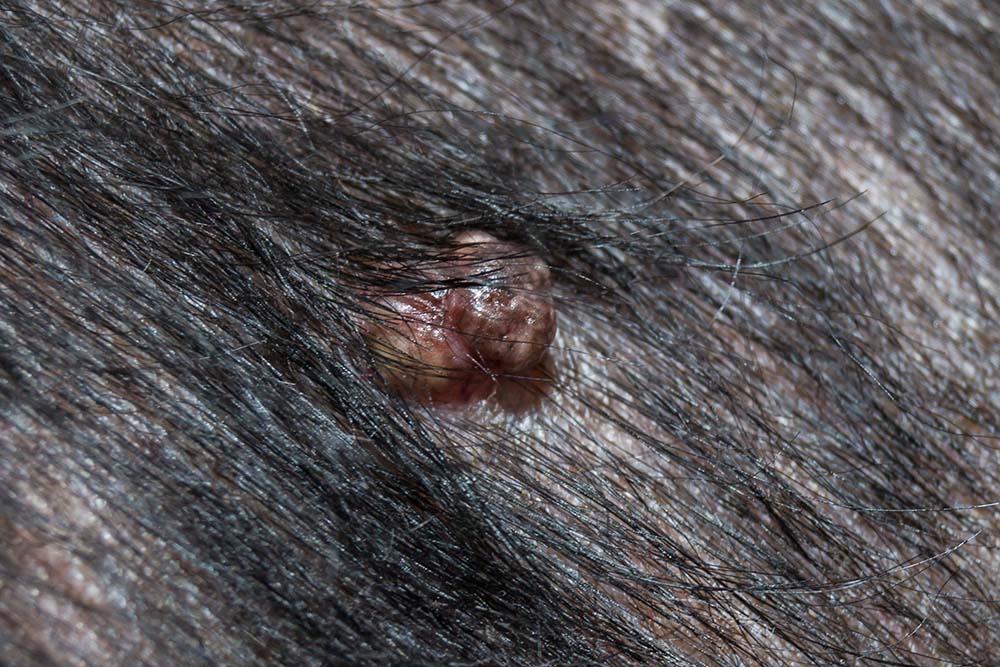
Benign warts usually don’t need any treatment unless they get infected, get in the way, or become irritated. Dogs licking or scratching them excessively may end up irritating them. Other damage can also be done by contact with collars or harnesses.

Of course, you’ll want your veterinarian to look at any new growth, lump, or bump on your senior dog just to make sure that it isn’t anything to worry about.
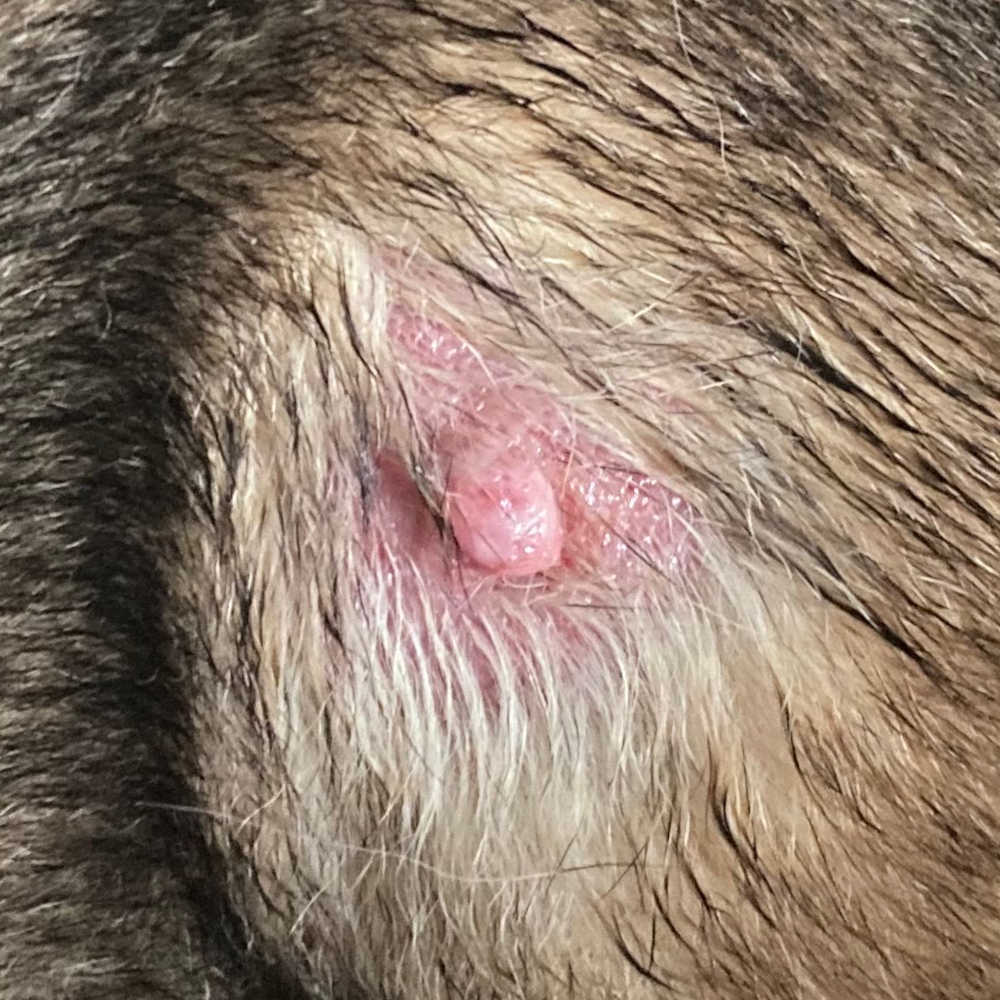
How to confirm that your dog’s wart is nothing to worry about
Warts are occasionally cancerous but are most often benign. However, you should always consult with your veterinarian if you see a new lump on your dog: it is usually not possible to diagnose a lump just by looking at it. For example, the picture below shows a pink, pearly and hairless lesion that is raised and ovoid shape. This lump could be a benign wart or… a cancerous mast cell tumor.
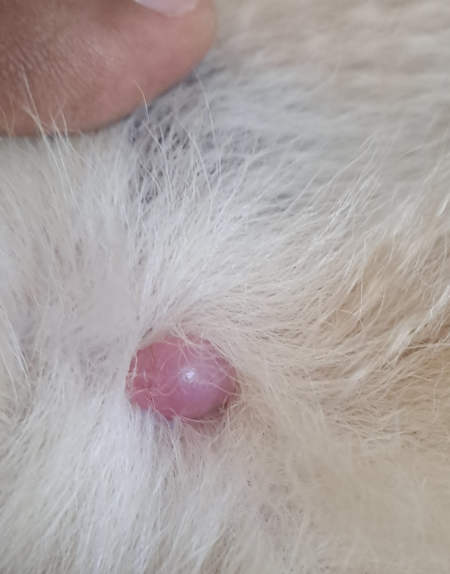
This is why it is so important to meet with your veterinarian to run diagnostic tests: learn about Fine Needle Aspirates and Biopsies.
Most warts are benign
Warts on dogs are most often benign and will often disappear of their own accord after a few months. Occasionally they can be, or become, cancerous so any wart that is a long-term issue, or that changes in color/size/look needs to be investigated by a vet.
Of course, you’ll want your vet to look at any new growth, lump, or bump on your senior dog just to make sure that it isn’t anything to worry about. Once confirmed as a benign wart, all you need to do in most cases is to keep an eye on it to make sure that it doesn’t grow, change, or become infected.
If a wart starts to bleed, grow, or look more like an ulcer, it needs to be re-evaluated by your veterinarian, as those changes could be signs of malignancy. Pictured below is a bleeding wart on a dog’s leg (small, round and furless lump that is inflamed and very red):
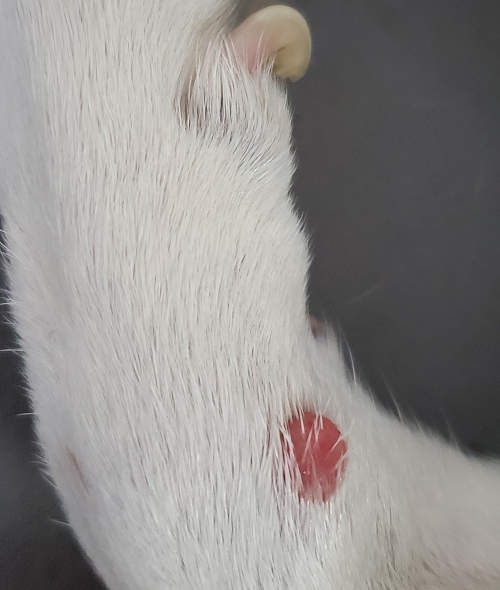
Any wart that has a variegated color (ie dark/light areas) and is on his muzzle, lips, or eyelids also needs to get a close look from your vet for the same reason.
If the wart starts to cause a problem for your dog and are uncomfortable or irritating to him, cryosurgery (freezing them off) is an option. But there is some discomfort related to that procedure, and the stress of it can lower the immune system even more. Read our related article: How to Remove a Wart.
Where do warts grow on a dog?
Warts commonly appear on a dog’s head (near the nose, mouth, ears and eyes), legs and paws, but can be found almost anywhere.
Wart near a dog’s nose:
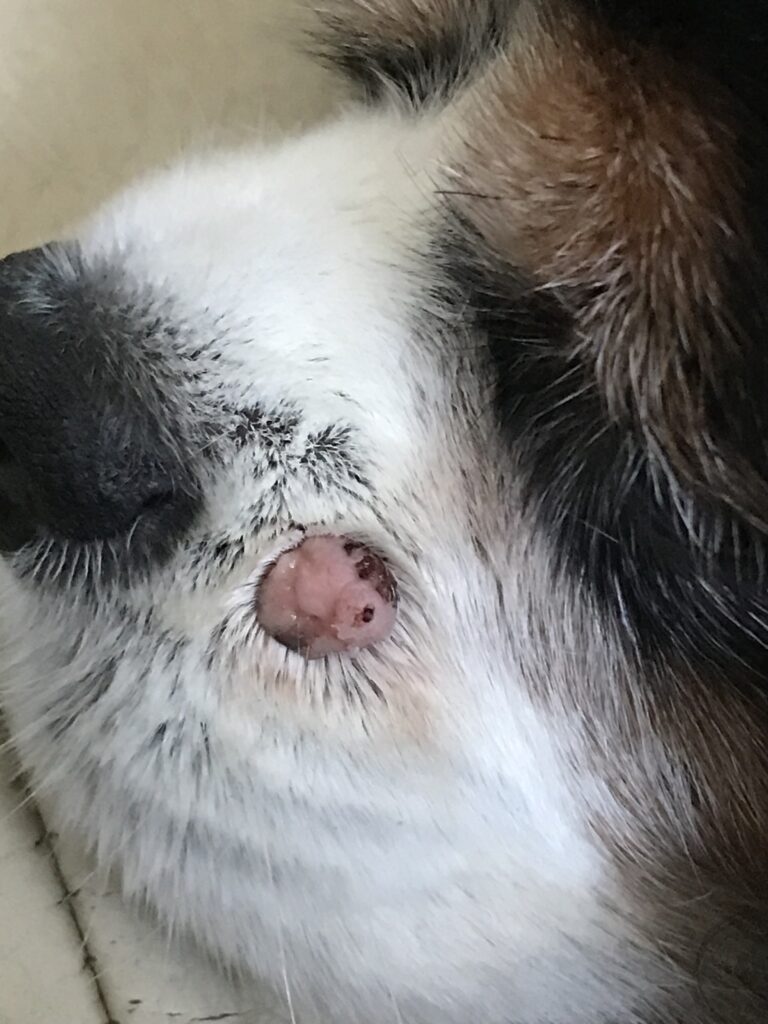
Warts are also commonly found on paws or toes, or near the paws, as shown in the pictures below:
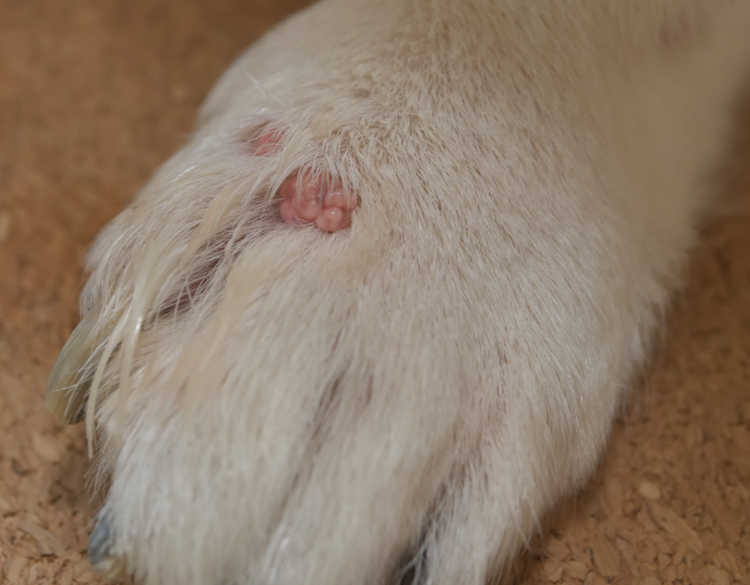
On a dog’s leg:

Pictured below is a black wart on a dog’s leg:
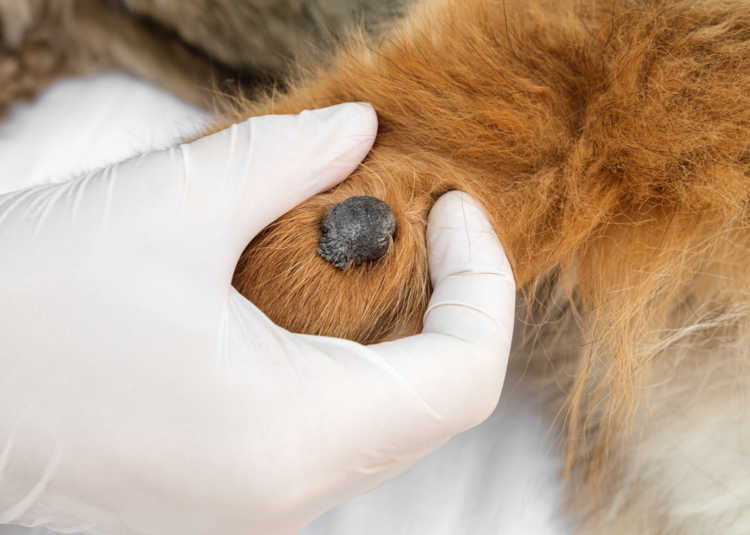
Warts can also be found on lips or inside the mouth:
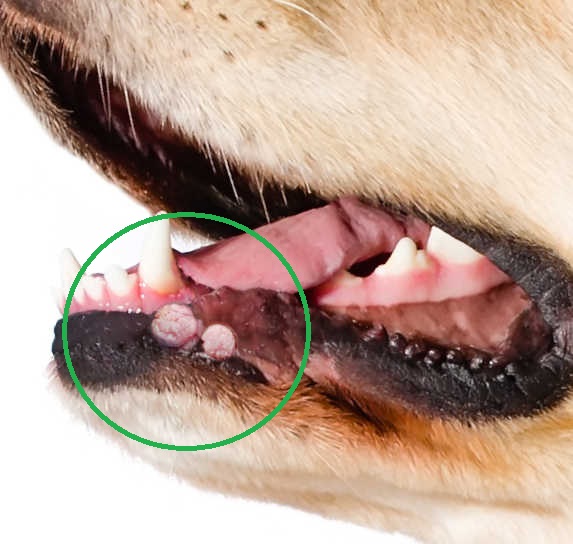
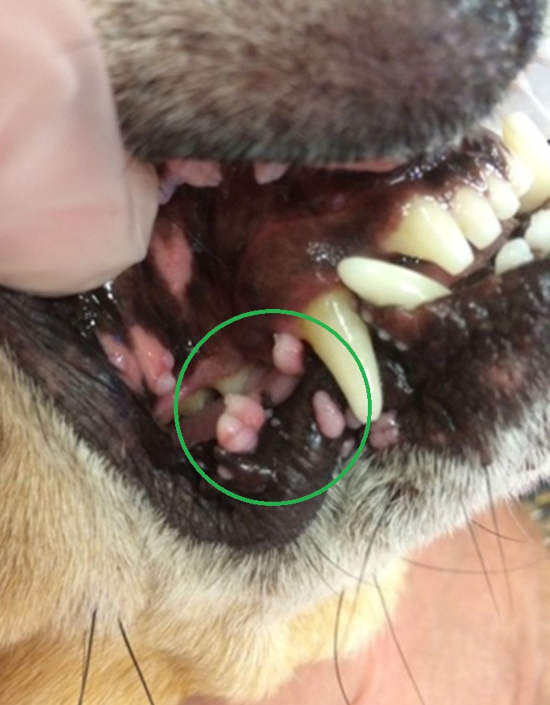
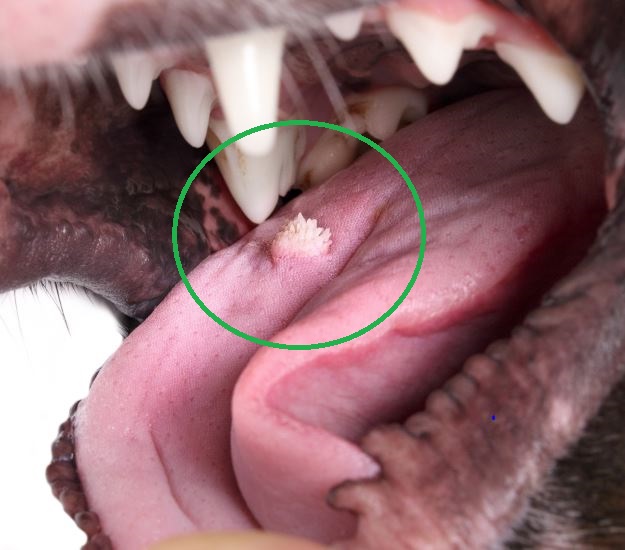
Does my dog have a wart or a skin tag?
Dog warts are also very similar to dog skin tags, as showcased in the image below. If you are not sure what your dog has, read our article about the Differences Between Dog Warts & Skin Tags.
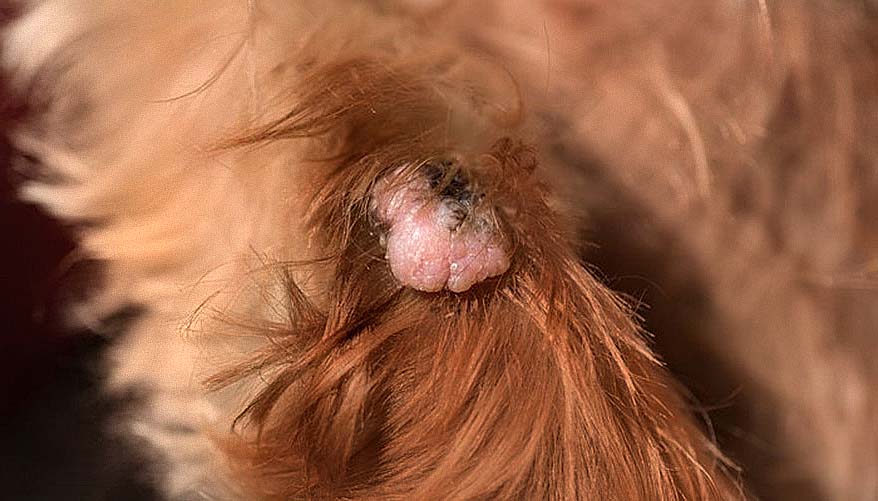
Does my dog have a wart or a cancerous tumor?
It is highly recommended that you have any new lump examined by your veterinarian as it can be difficult to diagnose a lump with complete confidence by just looking at it. The images below display three examples of malignancy or cancerous tumors that can be mistaken for warts:
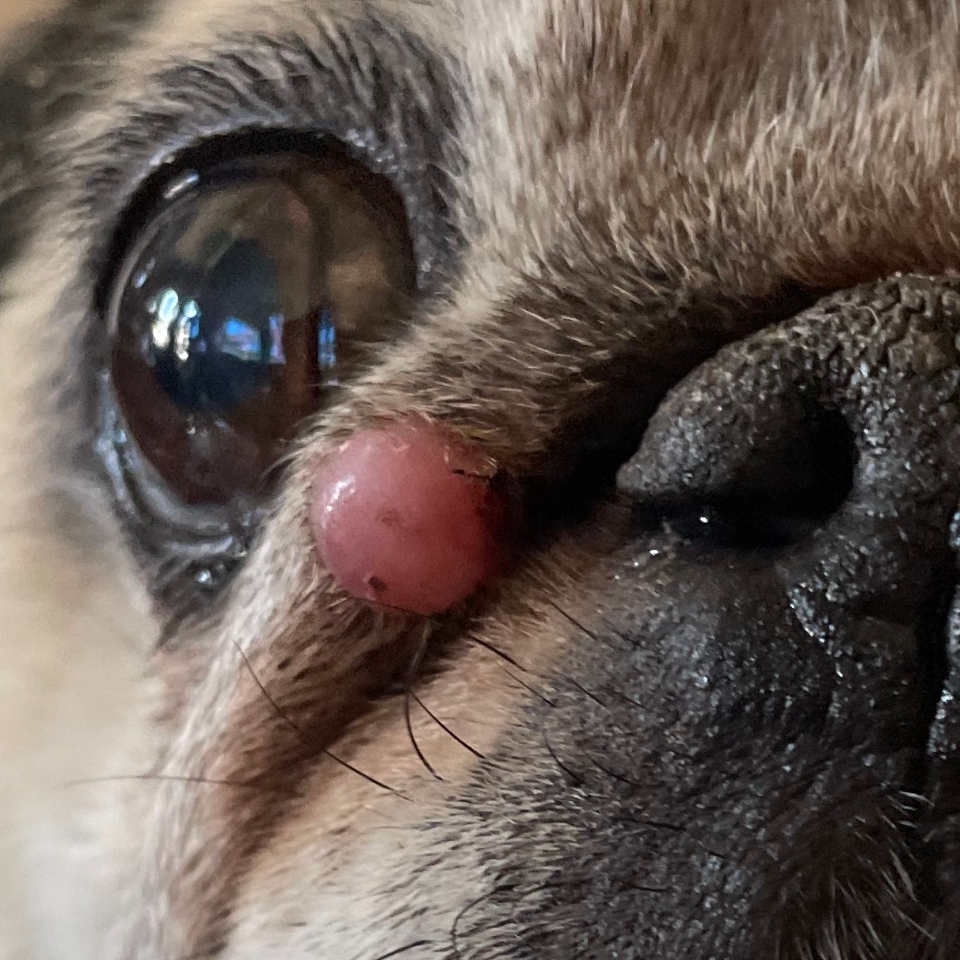
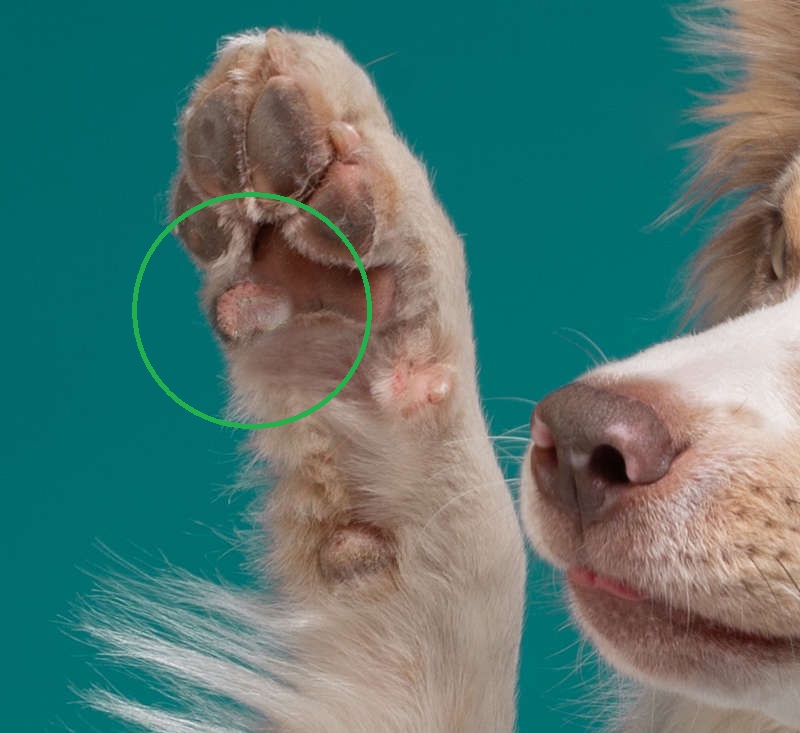
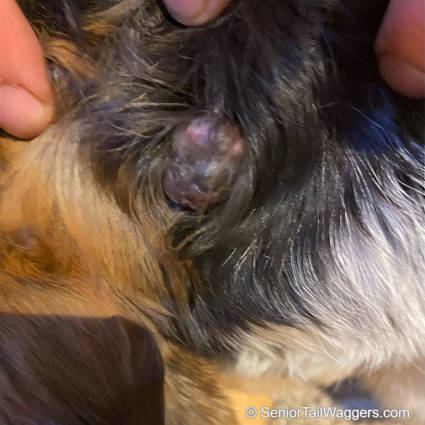
Treatment & removal
Simple benign lumps usually don’t need any treatment unless they get infected, get in the way, or become irritated. This can happen if a dog licks or scratches excessively, or if it is in an area that’s rubbed by a collar or harness, for example.
If the warts start to cause a problem for your dog and become uncomfortable, there are many options for removal with your veterinarian: read our article from Dr. Sara Ochoa about removing dog warts.
The two pictures below show a wart on the muzzle of a dog before and after treatment:
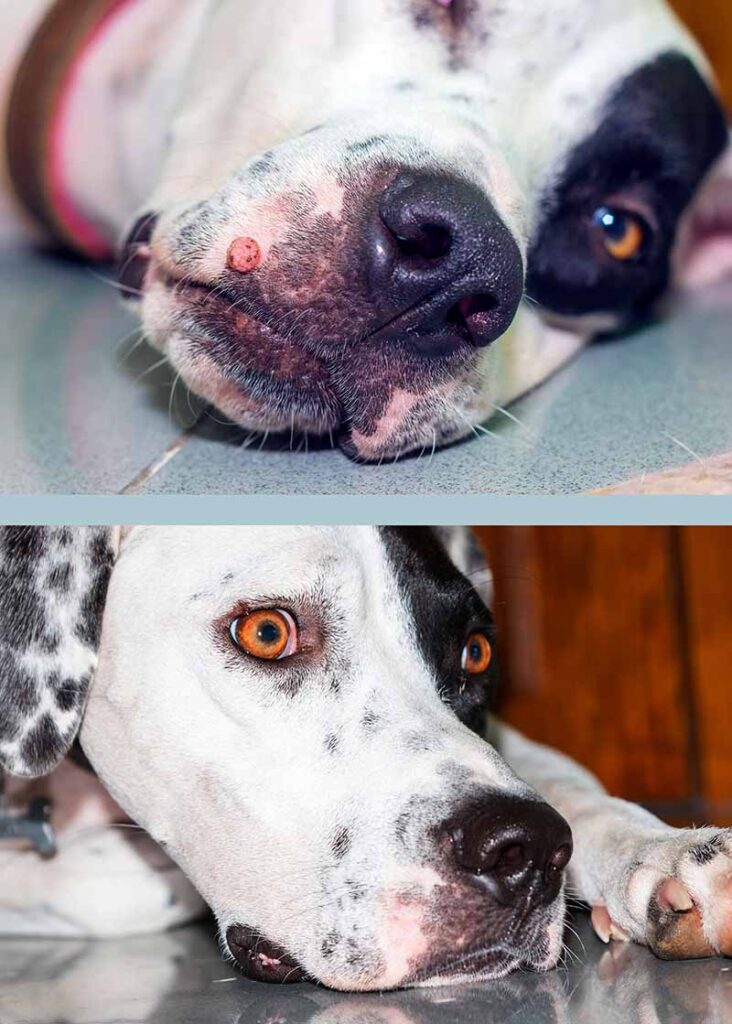
Are there home remedies that can help?
Vitamin E oil applied directly to the wart can sometimes cause it to shrink and eventually disappear.
Boosting your golden oldie’s immune system, making sure their diet is optimal, and treating any underlying health issues properly will all help their body to be stronger and healthier overall. This may also reduce their chances of getting warts and other old dog lumps, such as lipomas too.
What you should NOT do
In the picture below, a person attempts to remove a wart on a dog with a thread. This is an old and cruel, painful process for your dog – a bad idea all around. In the pic, the area is not shaved, prepped, or sterilely scrubbed.

Causes of warts on dogs
Canine warts are caused by a virus and are contagious from dog to dog, but luckily not from dog to human, or to cats. This virus tends to take hold best in dogs whose immune system is weak (which is why puppies and older dogs are especially at risk).
Canine warts are caused by a virus and are contagious from dog to dog, but luckily not from dog to human, or to cat. This virus tends to take hold best in dogs whose immune system is weak (which is why puppies and older dogs are especially at risk). Dogs who have been on corticosteroids for any extended period are also more susceptible, as the steroids weaken the immune system. The same can be said for dogs who are suffering from chronic health problems.
Related Posts:
How to Remove Dog Warts – Our Vet Explains
Disclaimer: This website's content is not a substitute for veterinary care. Always consult with your veterinarian for healthcare decisions. Read More.

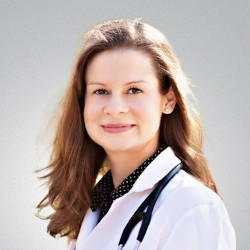

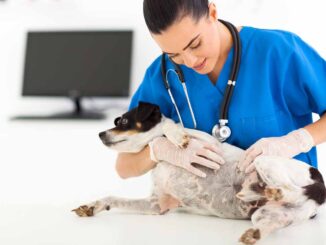

Thank you!! I just found a
lump on my 11lb Morkie snout area that thanks to your website I think it’s a wart but I will be taking him to the vet. Having pictures and explanations/information is SO very helpful thank you again God bless!!
Thank you for sharing these informative pictures and advice! It’s comforting to know what to look out for and when to seek help for our furry friends. I had no idea how common dog warts were until I read this. Perfect timing for my pup’s next check-up!
Thank you for sharing this informative post! It’s great to see both pictures and professional advice together. I never realized how common dog warts were until I read this. The tips from the veterinarian are really helpful too. I’ll definitely be more observant with my pup!
Thanks for showing the many photos of the variations a wart can present on dogs and the information about contagious dog to dog and NOT dog the human! Still wondering if they can spread dog to cat?
Hi there, and thanks for your comment and query.
The virus responsible for contagious warts (canine papilloma virus) is specific to dogs, so these warts cannot be spread to cats.
Cats can be affected by warts caused by the feline papilloma virus, and spread to them by other cats. These are much less commonly seen.
“The information on this website is not a substitute for in-person veterinary care. Always seek advice from your veterinarian if you have concerns about your pet’s medical condition.”
Thanks for the clarity
My Minature Schnauser has just been groomed and I can see a lump where her collar is. I have had a good look at it and hope it’s a fairly harmless wart. I will check it daily and if there are any changes in size, shape or colour I will get her to the vets. Thank you for an excellent website.
Thanks for sharing these informative pictures and insights! It’s really eye-opening to see how different dog warts can look and to have the vet’s advice alongside it. My pup has a couple of bumps I’ve been worried about, and this post gives me a better idea of what to pay attention to. Appreciate the tips on when to consult a vet!
Thanks for sharing these informative pictures! It’s great to see the different types of dog warts and learn about them. The veterinarian advice was super helpful too—definitely easing my worries about my pup. Keep up the great work!
Great post! The pictures really helped me understand what to look for on my dog. I appreciate the veterinarian advice too; it’s so important to get professional guidance. Thanks for sharing this valuable information!
This post was incredibly informative! I had no idea dog warts could be so common. The pictures really helped me understand what to look for, and the veterinarian advice was reassuring. I’ll definitely keep an eye on my pup! Thanks for sharing this valuable info!
Thank you for sharing this informative post! The pictures really helped me understand what to look out for regarding dog warts. I appreciate the veterinarian advice too—it gives me peace of mind knowing that I can monitor my dog’s health more effectively.
Thank you for sharing such informative pictures and insights! It’s great to see the different types of warts and the vet’s advice on handling them. My dog has a couple of growths, and this post really helped me understand what to look out for. I appreciate the reassurance that many of them are harmless!
Thank you for sharing these pictures and the helpful advice! It’s comforting to know more about dog warts and how to approach them with our vets. Always great to learn about our furry friends’ health!
Thanks for sharing these insightful pictures and the vet’s advice! It’s great to have a clear visual reference and expert tips on dog warts. I had no idea there were so many types! This really helps ease my concerns about my dog’s skin issues.